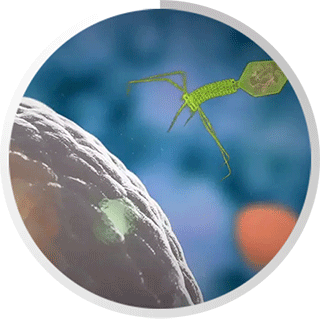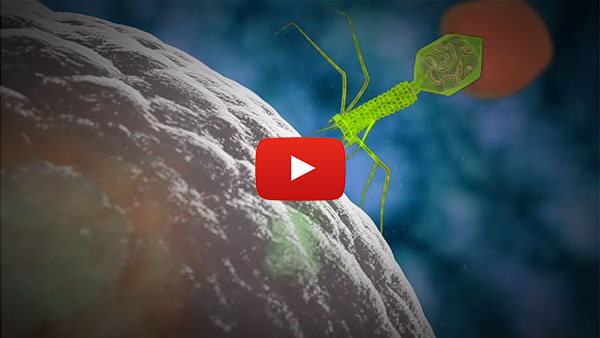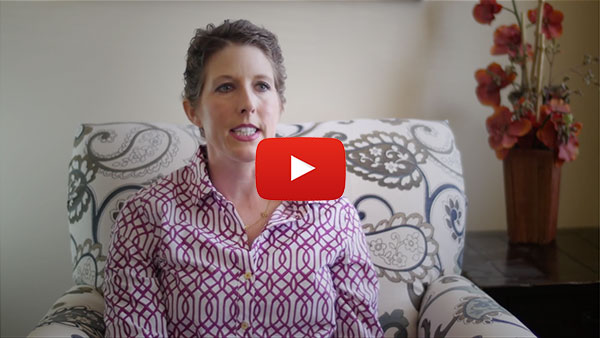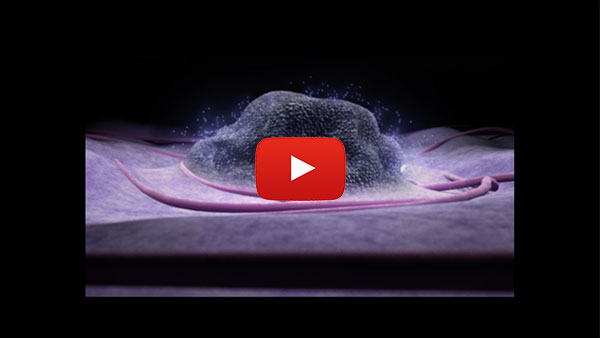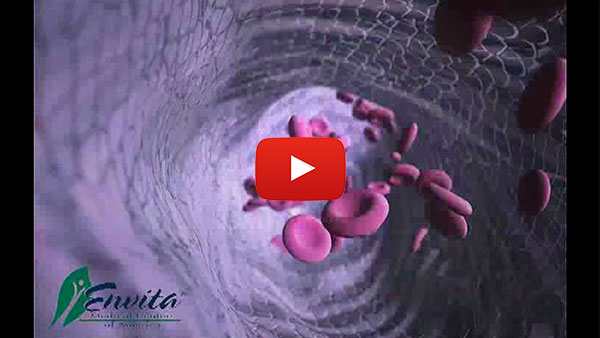Intravenous Vitamin C - An Extraordinary Natural Chemotherapy and Immunotherapy Agent

This peer-reviewed paper by Envita was written to help both patients and health professionals learn more about the benefits of Vitamin C. The history of Vitamin C began with James Lind's observations in 1747 that British sailors at sea for long periods of time did not develop scurvy if they ate oranges or lemons with regularity. The Vitamin C molecule was isolated in the late 1920's and was being produced synthetically within a decade. Linus Pauling and his colleagues were among the first scientists to laud the potential value of Vitamin C as a supportive therapy for cancer.
Vitamin C - Natural Cancer Treatment Serves Direct Cytotoxicity Killing on Cancer
In vitro studies have demonstrated that Vitamin C has anti-tumor cytotoxic activity at doses higher than 1000 μmol/L. Casciari et. al. showed that the concentrations of Vitamin C necessary to kill hollow fiber tumors in vitro, could be achievable in vivo. Vitamin C produces hydrogen peroxide on oxidation – long considered to be a primary mechanism of its anti-tumor activity. Levine and colleagues published evidence that Vitamin C delivers hydrogen peroxide to cancer cells in vitro, accounting for this tumor cytotoxic activity.
Vitamin C Works as an Anti-Angiogenic Agent
Although considerable interest has been given to the ability of Vitamin C to enhance chemotherapy drugs' action, a more recent finding is that the Vitamin can modulate the expression of the transcription factor hypoxia-inducible factor 1 (HIF-1).
HIF-1 is key to basic cell metabolism and controls cellular response to hypoxia. HIF-1 regulates several genes' enzyme and protein coding involved in glycolysis and angiogenesis.6 Angiogenesis in particular is key to tumor growth and HIF-1 has been shown to be present in the hypoxic core of some tumors.
Currie and colleagues have recently reported the results of a study investigating the effects of Vitamin C on HIF-1 expression in human umbilical vein endothelial cells and human skin fibroblast cell lines. In this report, both untreated cells and cells treated with either CoCl2 or hypoxia (to induce HIF-1 expression) were analyzed for their differential response to Vitamin C.
The addition of Vitamin C significantly decreased expression of HIF-1 in treated cells, in which HIF-1 expression had been induced. In untreated cells, low basal levels of HIF-1 were present, but the addition of Vitamin C to these cells completely abolished HIF-1. To assess the impact of Vitamin C on the expression of genes controlled by HIF-1, VEGF mRNA levels were examined. Vitamin C significantly diminished CoCl2-induced VEGF mRNA expression, but had no effect on VEGF mRNA in cells treated with hypoxia.
Since VEGF is one of the key growth factors contributing to the process of angiogenesis, these findings are of particular interest. These findings mirror those of Ratcliffe and colleagues. This team investigated the addition of Vitamin C to several cancerous cell lines, including PC-3 (prostate), OVCAR3 (ovarian), and HS578T, MDA 468, and MCF-7 (all breast cancer cell lines). Vitamin C diminished HIF-1 expression, VEGF mRNA expression and VEGF secretion in these cells.
More Encouraging Data for Vitamin C Utilized as an Chemotherapeutic Agent
Salnikow and colleagues, in a joint effort between the National Cancer Institute and Brown University, investigated the effects of ascorbate depletion on the expression of the hypoxia-associated proteins NDRG1/Cap43 and CA IX in the 1HAEo- human lung epithelial cell line. Following treatment of these cells with nickel, ascorbate was rapidly depleted from these cells, and the expression of HIF-1 as well as NDRG1/Cap43 and CA IX was increased. Subsequent re-addition of ascorbate to these cells reversed these effects. Likewise, pretreatment of 1HAEo- cells with ascorbate, followed by addition of nickel, completely inhibited the induction of these proteins.
Currently, angiogenesis inhibitors such as Avastin, Nexavar, and Sutent are FDA-approved drugs for use in the treatment of cancer. The recent discovery of the anti-angiogenic effects of Vitamin C are promising and further support the use of high-dose intravenous Vitamin C as an adjuvant treatment for cancer.
Vitamin C and Natural Treatment - NIH and it's Hisory with Pauling
In 1976, Pauling and Cameron published one of the first studies of supplemental Vitamin C administration in patients with terminal cancer. 100 terminal cancer patients received intravenous Vitamin C doses of 10 g per day for 10 days and then orally thereafter. 1,000 cancer patients served as the control group and did not receive Vitamin C in any form. Mean survival time for patients receiving Vitamin C was more than 4.2 times that of the control group. A retrospective analysis of this study, published in 1978, found that 22% of patients receiving Vitamin C had greater than 1 year survival even after being pronounced terminal, compared with 0.4% of the control group.
Levine and colleagues at the National Institute of Health recently published results of a modest trial investigating the pharmacokinetics of Vitamin C in plasma. Various doses of both oral and intravenous Vitamin C were administered to 17 healthy volunteers. In this cohort, mean peak plasma values of Vitamin C were shown to be significantly elevated following intravenous Vitamin C, compared to oral administration of Vitamin C.
At the highest intravenous dose of 1.25 grams, peak plasma values were nearly 7 times higher than plasma values for an oral dose of 1.25 grams. Importantly, plasma levels of Vitamin C continued to increase with increasing intravenous doses, whereas increasing oral doses eventually reached a plateau effect. These researchers concluded that intravenous administration of Vitamin C could achieve 70-fold higher ascorbate levels in blood than the maximum tolerated oral dose. In 2006, Levine published three case studies of advanced cancer patients who had received high-dose intravenous Vitamin C therapy.11 In all cases, patients achieved remission for at least 4 years.
More Clinical Data Supporting Vitamin C as a Natural Cancer Treatment
Song and colleagues recently published the results of a clinical trial involving administration of intravenous Vitamin C in 39 terminal cancer patients. Patients answered quality of life questionnaires before and after treatment. A significant increase in quality of life scores was noted following Vitamin C administration. Moreover, patients reported significantly higher scores for physical, role, cognitive and emotional function, with significantly lower scores for pain, fatigue, nausea/vomiting, loss of appetite, and sleep disturbance after receiving Vitamin C.
Multiple studies have demonstrated the ability of Vitamin C to increase the efficacy of chemotherapy. Lamson and Brignall's 1999 review of antioxidant use with cancer patients emphasized that Vitamin C increases the chemotherapeutic effects of doxorubicin, cisplatin, vincristine, and paclitaxel in in vitro studies. Likewise, Vitamin C given prior to chemotherapy in animal studies increased survival time and the effect of several chemotherapeutics, including cyclophosphamide and 5-FU.
Hunter and colleagues published case studies of two advanced ovarian cancer patients who both received carboplatin, paclitaxel, and intravenous Vitamin C at a dose of 60 g/day twice a week for several months. One woman in this study was found to have complete remission of her disease, and the other woman maintains low CA-125 levels more than 3 years following her diagnosis. Administration of intravenous Vitamin C in these patients did not diminish the effectiveness of the chemotherapy regimen, nor did it exacerbate its toxicity.
The Effects of Vitamin C on a Patient's Immune function
The effects of Vitamin C on immune function are extremely varied. The immune system relies heavily on endogenously produced ROS (such as H2O2) and reactive nitrogen species (such as NO) as a means of immune activation during times of infection and inflammation. The high cellular concentration of Vitamin C and its rapid decline in plasma and leukocytes during stress and infection also suggest a direct role in the immune response.
This observed decrease of plasma and leukocyte Vitamin C levels during infective periods suggests that the increased generation of ROS is counteracted by reaction with Vitamin C, protecting host immune cells. While cells of the immune system release ROS and NO during periods of immune activation, Vitamin C helps protect the immune system from its own weapons by quenching these radicals. For instance, Vitamin C has been demonstrated to protect neutrophils from ROS generated during phagocytosis. Vitamin C supplementation also significantly decreased H2O2-induced DNA damage in lymphocytes in healthy male and female nonsmokers.
In studies in healthy subjects, administration of Vitamin C resulted in improvement of several components of human immune parameters, such as antimicrobial and NK cell activities, lymphocyte proliferation, chemotaxis, and delayed-type hypersensitivity (DTH). Even in elderly adults known to have reduced Vitamin C plasma and leukocyte concentrations, Vitamin C supplementation resulted in enhanced cell-mediated immunity and improved serum immunoglobulin levels.
Vitamin C - Helping 80% of Late Stage Cancer Patients Face Life-Threatening Infections
The use of Vitamin C as adjuvant or prophylactic treatment for infectious disease is not without precedent. Linus Pauling, the Nobel Prize winning chemist, lauded the benefits of Vitamin C for prevention of the common cold for decades. Hemila recently published a review of 12 clinical trials, performed separately, that assessed the efficacy of Vitamin C supplementation in respiratory infections in military personnel and students living in crowded quarters.
After reviewing these studies, the author concluded that Vitamin C substantially reduced the incidence and severity of respiratory infections in several of these trials.16 Kodama and colleagues reported that over a 10-year period, high-dose intravenous Vitamin C proved to be effective for the clinical control of patients with interstitial pneumonia, an autoimmune disease associated with chronic fatigue syndrome. Chuang and colleagues recently reported the results of Vitamin C supplementation on triple antibiotic therapy (omeprazole, amoxicillin, and clarithromycin) for eradication of H. pylori in 171 subjects. Patients receiving Vitamin C had significantly higher eradication rates than those who did not, and allowed for lower dosages of clarithromycin without losing efficacy.
Clinical Studies of Vitamin C in Relation to Cardiovascular Disease and Smoking
Willett and colleagues at Harvard Medical School reported in 2003 on the results of a 16-year longitudinal study of 85,118 women that assessed the impact of Vitamin C supplementation on the risk of coronary heart disease (CHD). Approximately 19% of participants supplemented their Vitamin C intake. After adjusting for a number of coronary risk factors such as age, smoking incidence, and use of other dietary antioxidants, women who used Vitamin C supplements had a 28% lower incidence of CHD than women who did not.
Suh et. al. investigated the relationship between Vitamin C intake and ischemic heart disease in 108 Korean men. (Because Korean men have among the highest prevalence of smoking in the world, this study also factored smoking into the variables considered.) Of the 108 participants of this study, 58 had new onset angina pectoris and 50 had a first acute myocardial infarction. Vitamin C supplements were not employed in this study; rather, the participants were allowed to eat their normal diet, which was assessed by a nutritionist to determine daily Vitamin C intake.
Participants were first stratified into three major groups based on daily Vitamin C intake and then further placed into subgroups based on whether they were current smokers, ex-smokers, or non-smokers. After evaluation, daily intake of Vitamin C was directly related to a lower incidence of non-fatal ischemic heart disease. Specifically, those participants who currently smoked and had low daily intake of Vitamin C (< 141.8 mg) were over 8 times more likely to have non-fatal ischemic heart disease than non-smokers who had either medium (141.8-220.2 mg) or high (> 220.2 mg) daily intake of Vitamin C. Current smokers with high daily Vitamin C intake had only 1/3 the risk level than current smokers with low daily Vitamin C intakes. The researchers concluded that high daily Vitamin C intake decreased the risk of ischemic heart disease, even in patients who continued to smoke.
Oxidative Stress
Misra's research team investigated the effect of Vitamin C supplementation on oxidative stress parameters in 80 patients who had suffered a myocardial infarction and were in the post-reperfusion phase. Ischemia plays a dominant role in the pathogenesis of both myocardial infarction and stroke. Under ischemic conditions, an increase in the levels of oxidative stress markers occurs.
Specifically, ischemia results in increases in xanthine and xanthine oxidase, which produce free radicals in the presence of oxygen. Because levels of these free radicals increase as ischemia continues, the establishment of reperfusion to myocardial tissue can actually result in transient, or even permanent myocardial injury.22 This study reported that following thrombotic events that caused ischemia, thrombolytic therapy resulted in significant decreases (compared to pre-thrombolytic therapy levels) in superoxide dismutase (SOD) and total thiols – two important oxygen radical scavenging enzyme systems.
Supplementation of 1000 mg Vitamin C for five days in these patients resulted in significant increases in these enzymes, compared to both pre- and post-thrombolytic therapy levels, as SOD and total thiol levels were at their highest following Vitamin C supplementation. Likewise, levels of the oxygen radicals xanthine oxidase (XO) and malondialdehyde (MDA) were significantly elevated in ischemic patients in the post-reperfusion period compared to pre-thrombolytic therapy levels. These oxygen radicals were significantly decreased following Vitamin C supplementation, compared to both pre- and post-thrombolytic therapy levels – XO and MDA levels were at their lowest in these patients following Vitamin C supplementation.
Heart and Muscle Contractility - The Effects of Chemotherapy and Radiation on the Heart
In 2007, Yokoyama's team published the results of a Japanese study that investigated the effects of Vitamin C and dobutamine on myocardial contractility in patients with heart failure following anterior myocardial infarction. Dobutamine is a selective agonist that promotes increased cardiac output in patients with heart failure. Ten patients were selected for the Vitamin C group, with 9 controls.
Cardiac catheterization was performed to achieve direct measurement of several hemodynamic and contractile factors. This study found that Vitamin C significantly enhanced the response of left ventricular contractility and left ventricular stroke work, above the increases in these factors that occurred in response to ß-1 adrenergic stimulation. Further, this enhancement of myocardial efficiency by Vitamin C did not result in increased myocardial oxygen consumption. These data suggest that Vitamin C is a safe and effective adjuvant therapy for patients with heart failure.
In 2003, Martin and colleagues at Tufts Medical School published the findings of their investigation of plasma Vitamin C levels in patients following ischemic stroke. Fifteen ischemic stroke patients and 24 control subjects participated in this study. Plasma levels of Vitamin C and other oxidative stress and inflammatory markers were measured 2 to 5 days following ischemic events in the 15 subjects. Despite having similar Vitamin C dietary intakes, ischemic stroke patients had significantly reduced plasma Vitamin C levels compared to controls, as measured by paired-ion, reverse-phase HPLC coupled with electrochemical detection. Interestingly, plasma Vitamin C levels had a strong inverse correlation with CRP levels in this cohort, suggesting that Vitamin C may play a critical role in the stroke-mediated inflammatory response.
Vitamin C for Stroke and Cancer Patients with Clotting Problems
In January 2008, Khaw and colleagues published peripheral findings from the ten-year European Prospective Investigation into Cancer (EPIC) study concerning Vitamin C and incidence of stroke. 20,649 men and women, ages 40 to 79 and without history of stroke at baseline, participated in this longitudinal study.
Participants submitted health questionnaires at various intervals over the ten-year time frame, per study protocol. Based on their responses to the study questionnaires, participants were stratified into four groups based on their reported daily Vitamin C intake. After evaluating participant questionnaires, the researchers found that those people in the quartile that reported the highest daily Vitamin C intake had a 42% lower relative risk of stroke than those people in the bottom quartile (lowest daily Vitamin C intake among study participants). This decrease in relative stroke risk was found to be independent of age, sex, smoking habits, BMI, systolic blood pressure, cholesterol, physical activity, prevalent diabetes, myocardial infarction, social class, alcohol consumption, and any supplement use. Overall, the researchers reported that there was a 17% reduction in incident stroke for every 20 micromoles per liter increase in plasma Vitamin C concentration.
This peer-reviewed paper has demonstrated that Vitamin C is a warranted adjuvant therapy for patients with cancer. The in vitro cytotoxicity of Vitamin C has been noted in several different types of cancer cell lines, and ability of Vitamin C to enhance the effectiveness of chemotherapy has also been reported.
Clinical studies of Vitamin C supplementation in cancer patients have suggested that adjuvant use, especially by intravenous delivery, has therapeutic efficacy. The potent antioxidant activity of Vitamin C also results in direct enhancement in immune functioning. Supplementation of Vitamin C resulted in synergistic enhancement of triple antibiotic therapy in patients with H. pylori infection.
Recent publications have demonstrated that daily intake of Vitamin C is directly correlated with decreased risk of coronary heart disease, myocardial infarction, and stroke. Patients with myocardial infarction and/or ischemic stroke both present with decreased levels of Vitamin C shortly after symptom exacerbation. This decrease in Vitamin C levels has been shown to be statistically significant compared to control subjects.
Vitamin C supplementation in myocardial infarction patients resulted in increased levels of protective antioxidant enzymes and decreased levels of inflammatory and oxidative stress markers. Vitamin C worked synergistically with dobutamine in patients with heart failure secondary to anterior myocardial infarction, resulting in increased left ventricular contractility and stroke work. Importantly, the observed increase in left ventricular efficiency did not result in increased myocardial oxygen consumption.
Envita Medical Centers and Intravenous Vitamin C
Contact us to learn more about our speed drip intravenous Vitamin C technology, including our sustained released intravenous Vitamin C technology that we have found to be clinically superior to all others. In addition, we do not ever use corn-derived GMO Vitamin C with patients; rather, we utilize far cleaner sources that we believe makes a difference. Inquire today to learn more.

